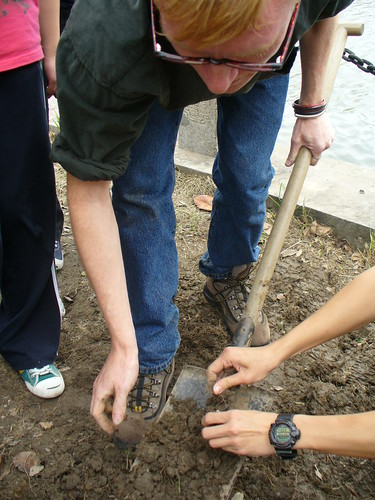The main reason people decide to go organic when gardening is that they think commercial chemicals, including pesticides and fertilizers, may degrade soil quality, harm the environment and cause long-term damage to their personal health. Organic gardening is also cheap and requires very little equipment. Here are some suggestions on helping you to become a organic gardening professional.
Get your kids to help you grow your organic garden. Toiling together in the garden brings your family closer together and offers many different opportunities to learn new things and instill green values.
Ward off certain diseases that plague plants with the use of aspirin. An aspirin and a half, dissolved in about two gallons of fresh water, is great for your plants. All you have to do is spray the plants with this solution and you should see good results. The spray ought to be applied approximately every three weeks.
If you are a fan of organic, sustainable gardening methods, consider leaving part of your backyard untouched so that natural plants and wildlife can flourish in the area. This will also benefit your cultivated gardens as it will attract more bugs and birds to pollinate your other plants.
When growing organic plants indoors, it is important to consider the amount of light that is available to them. If you want indoor plants, choose specimens that can grow in relatively dark places. If you want to grow a plant which requires more light, you can invest in grow-lights.
After your seeds begin to sprout, it is not as important to keep them warm. Move your plants further away from your heat source as they grow. You must also take away plastic films from your containers in order to keep the warmth and humidity out. Monitor the seeds carefully so you know the best time to do it.
You should add a two to three inch layer of organic mulch to your flower bed. This will discourage weeds from growing, add nutrients, and retain the moisture in your garden. As an added bonus, a nice mulch can help make your garden look more finished.
Work efficiently in your garden. Don’t waste your time by looking all over for your tools. Prepare all the tools you need before you go out to work on your garden, and put them away nicely when you are done. You can use a tool belt for this purpose, or choose pants that contain several large pockets.
For some plants, pine needles makes an ideal mulch. Some plants are more acidic, and prefer soil that contains higher acidic levels. When you have any plants like this, it’s very simple to just collect pine needles to use in your bed. Cover the beds with a couple inches of needles and as they decompose, they will disperse acid to the soil.
Keep your compost pile balanced with a combination of dried and green plant mulch. You can use all types of green material in your compost pile, including cut grass, dead flowers, fruit peels and cores, and much more. You can add dried plants by throwing straw, shredded paper, woody materials and cardboard on your pile. Certain substances will undermine your composting efforts and cancel out any benefits; these include meat, charcoal, ash or plants that have diseases or fungal growths.
When you plant the seeds in containers, be sure the planting’s depth is three times bigger than the seed. You should know that certain seeds need not be covered, because they need the sunlight. Typical examples are petunias and ageratum. If you are unsure if your seeds should be covered, refer to the seed packet, or if that is not available, look for information online.
While organic gardening costs more and requires more effort, the produce that will come out of your garden will be healthier for you. While chemical pesticides and fertilizers may claim to do great things for your garden, organic methods will give you the best crops possible.
It is possible to quickly and easily prepare your garden for new perennials. Cut beneath the turf using a spade, then flip it over. Finish by covering the entire area using several inches worth of wood chips. Once a couple of weeks have passed, you can then dig into the new garden bed and plant some of your favorite perennials.
By following some of the tips we include in this article, you’ll be up and running in no time and will soon have a good supply of produce grown in your own garden. Keep in mind that you can expect to see increase in wildlife when your garden begins to grow and work with nature.
–
